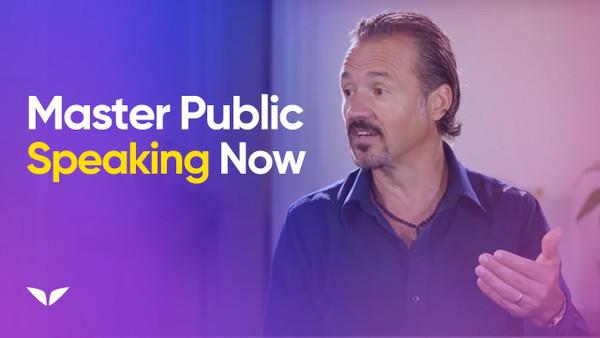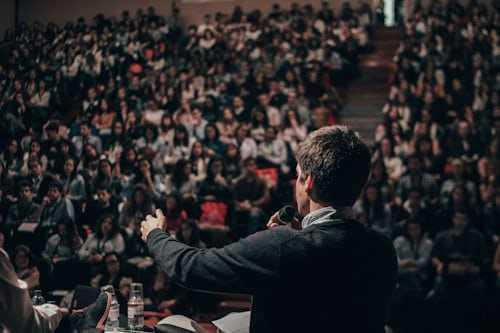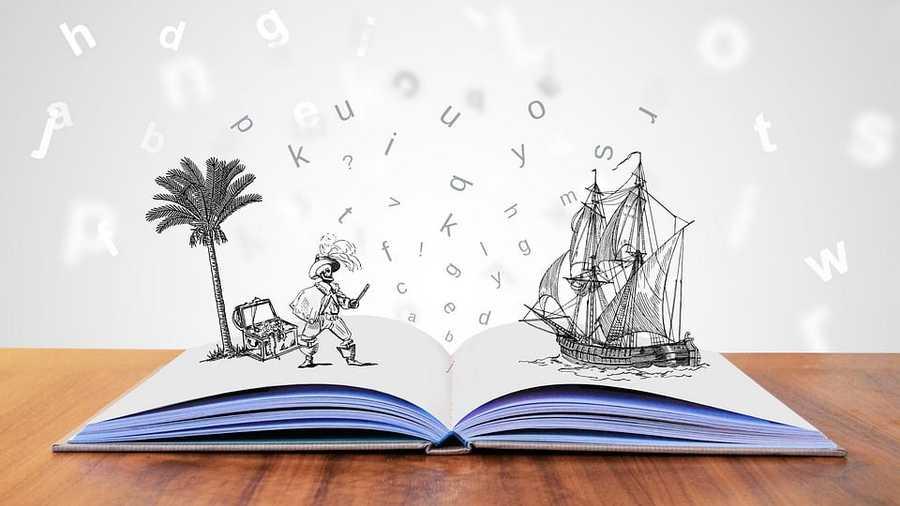How To Become A Master In The Art of Public Speaking (Part 1 of 2) | Eric Edmeades
Mindvalley Talks
16 ideas
·11.8K reads
78
Learn more about communication with this collection
The spiritual benefits of fasting
The rituals and practices during Ramadan
The importance of community and charity during Ramadan
161
1.66K reads
One Talk Away
Everyone is ONE TALK AWAY from their huge success and you never know which one is that talk.
Give your very best in each talk because you will never know before that talk that will be going to change your life and others also.
158
948 reads
Stage Effect
This an unfair advantage to famous speakers, whenever they get on the stage they get a huge amount of attention from the audience without saying anything. But for new speakers, they have to earn it.
According to Eric -
Amount of attraction created = Quality of presentation * Size of audience
161
981 reads
F-15 & L-15
- F-15 stands for the First 15% of your talk. Use more of your fuel in this time, get more attention. In this section try to perform a practiced content with the known result (like - laughter) or may say something like this -
"What I'm going to tell, will change your life."
- L-15 stands for the last 15%. Here you also can use practiced content or better you can summarise the talk or tell some key takeaways.
181
810 reads
Know Your Client
If it is your show or you have created the whole thing then your audience is your Client.
But if you are invited to someone's show then the Producer is your client.
158
821 reads
Key & Secondary Objectives
When you know who is your client then decide your objectives -
- Key Objectives: If the audience is your client, the key objective will be what is important to you. But if the producer is your client then the key objective will be what is the producer want.
- Secondary Objective: These are the things that you think wouldn't be nice if as a result of this talk these things happen. It may increase your followers, or promotion of your book, or something else.
161
568 reads
Speech Map
- First, start with WHY? why this talk important. Use F-15.
- Go to WHAT? talk about the topic.
- Then HOW TO? talk about how this thing can be done.
- Finish with WHAT IF? or just like Q & A's.
In each part, you have to include stories. It can be a little information followed by a supporting story or vice versa. You can also drag many results from one story and then extend it to another story depending upon how much time you have.
216
792 reads
Story Telling
Our brain enjoys information in the story format. Because stories are easy to remember and stories connect with the audience by an emotional bond.
Remember the difference between reporting a story and telling a story. Storytelling is telling the stories with emotion so that you can cast a spell of time distortion and your audience will never know from how much time you are speaking.
187
981 reads
Keep a Story Journal
A story journal will help you keep track of your stories. Remember these points for a good story journal
- Don't write in a paragraph - write just bullet points.
- Feel the tiny details - don't have to write - you will remember them each time you see the bullet points.
- If possible give the stories a name and where you can use them.
- The story may be normal for you but it is life-changing for someone. So don't judge a story - if it had emotion - just write it down.
187
494 reads
Be Flexible with Time
If you have created a speech map then you will be flexible with time. You just need to know how much time will take for each part.
If you need more time then expand any brach in your speech map and add stories and if need to short the talk then just shorten the stories.
157
405 reads
Vocal Tone
First and foremost - DON'T BE MONOTONOUS. The audience will sleep, try to keep interacting with them with your vocal tone.
There are 3 kinds of people
- Visual: who prefers to jumping around on the stage and with high vocal tones - like most motivational speakers
- Auditory: These are the people who are monotonous voice - Do not have a pause in the speech - like the office speeches
- Kinesthetic: They are the people with soft tone wanted to connect with your soul - have long pauses in a speech that gives times to think.
Ideally, you should start from the bottom then go to the top (3 -> 2 -> 1). Then only every kind of person in the audience will be interested in the speech.
180
388 reads
Before the Speech
- Visualize the speech in your head, just feel how excited you are and you have given a phenomenal speech - got standup innovation.
- Never show your audience that you are nervous - Be Confident.
- Be prepared with a speech-map and the stories.
- Just before the speech takes deep breaths, relax your eyes - just gaze at the audience softly.
- Don't memorize the speech.
179
564 reads
Nervousness is simply excitement with a negative expectation.
Excitement is nervousness with positive expectations.
ERIC EDMEADES
172
562 reads
Summary
- Be relax before the speech.
- Prepare speech-map.
- Decide what stories you want to tell.
- Be flexible with your time.
- Start with a predictable laugh.
- Never show your nervousness.
- Be authentic - be YOU.
175
706 reads
CURATED BY
A learner who loves to share wisdom on personal growth, happiness, and success on Deepstash. Topics include motivation, habits, goals, and mindset. Believes that everyone can achieve their dreams with the right attitude and action.
More like this
5 ideas
6 Public Speaking Tips To Hook Any Audience
Charisma on Command
8 ideas
1 idea
Does one have to be a genius to do maths?
terrytao.wordpress.com
Read & Learn
20x Faster
without
deepstash
with
deepstash
with
deepstash
Access to 200,000+ ideas
—
Access to the mobile app
—
Unlimited idea saving & library
—
—
Unlimited history
—
—
Unlimited listening to ideas
—
—
Downloading & offline access
—
—
Personalized recommendations
—
—
Supercharge your mind with one idea per day
Enter your email and spend 1 minute every day to learn something new.
I agree to receive email updates











